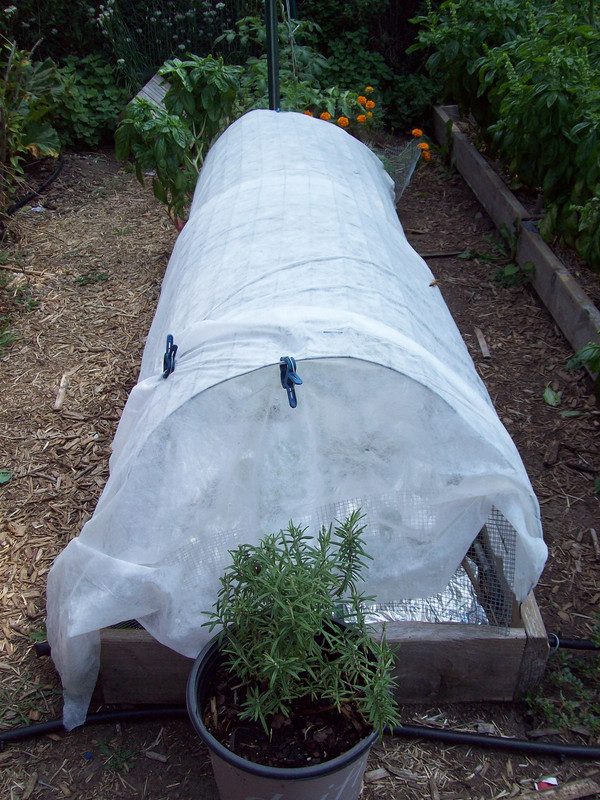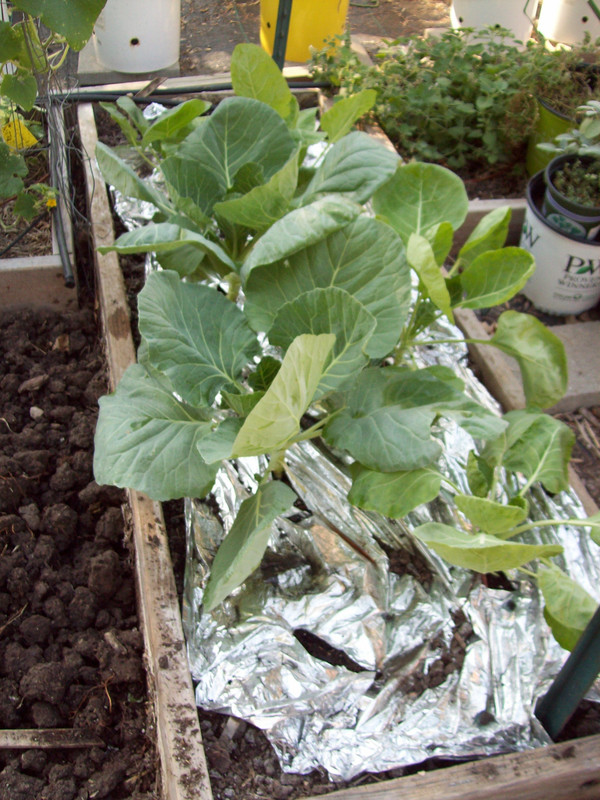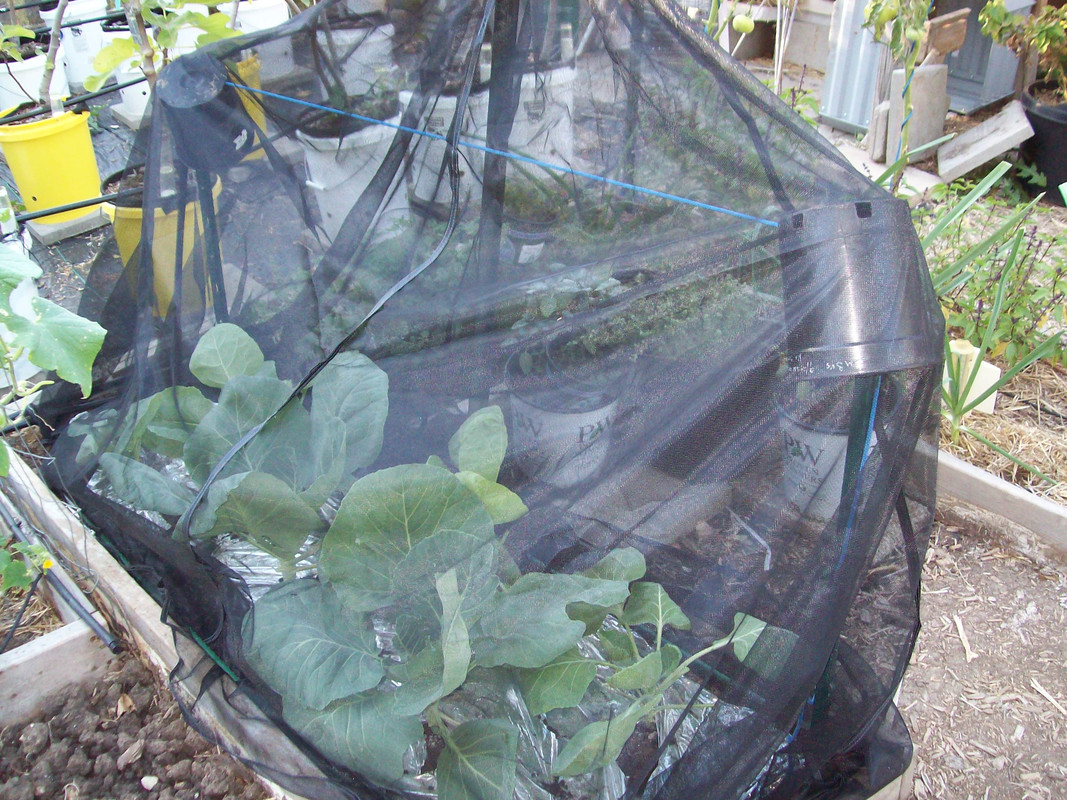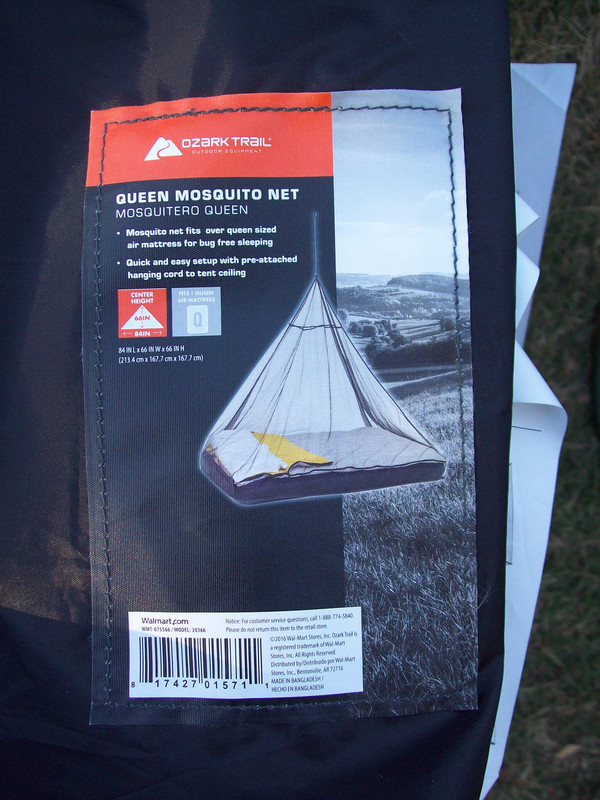Roasted Jalapeno Popper Grilled Cheese:

https://iamhomesteader.com/jalapeno-popper-grilled-cheese/
Posted on 10/01/2022 6:40:39 AM PDT by Diana in Wisconsin
Welcome home! Your corn looks fantastic! :)
I’ve grown potatoes in containers before, with mixed results.
My potato patch this year was around 600 sqft. I’m not buying that many containers!
You Tube by former Wisconsin resident John Kohler from "Grow your Greens." Big pile of wood chips at about 4 min. These gardeners apparently get them free from tree companies. Local tree companies here will not let you have any because of the Emerald Ash borer problem. (I asked!)
SuperSize Your Vegetables with Wood Chips & Rock Dust in Your Garden
They use mushroom spore on the wood chips to help break it down, hold water, and, I suppose, grow mushrooms. (King stropharia, or the wine cap mushroom takes its name from the rich wine like coloring of the cap in its younger button state.) He had a later video that discusses spores.
There are a bunch of Videos out there about chips if you are interested. (Bio char...morels apparently grow under dying elms and old orchards were there was recent fire, but you probably already know this. (Others may not!))
Soils can be bacterial or fungal based, and I am not sure how easy it is to switch between them. You may already have some thoughts on that subject, or maybe Diana does.
My experience/failure. Last year's potatoes experiment; screened soil added rice hulls; grew in garden bags inside of 15 gallon pots. Leafed out, but realized just a handful of tiny potatoes. Hard to keep watered and cool. Used this method this year with Sweet potatoes, kept the pots behind a picket fence to shade, let the leaves grow on the fence and kept the leaves trimmed and did get about 10 pounds of sweet potatoes. (Curing now on my back porch.)
This year's failed potato experiments. Late start, (hot weather) and used a broken straw bale in a vertical tower made of 4’ high Fence 2 1/2’ Diameter circle. Put screened compost dirt each level going up where I planted the sprouting potates. No sprouts leafed on the outside of the tower. Too much water, (rain and watering) the potato cuttings rotted and became food for the sow bugs (introduced in the soil I used.) No potatoes but I did get some good rotting straw this year for my compost pile! I will try again next year earlier in the year.
(A Sow/Pill bug trap is of course, a piece of cut potato that you leave out overnight and pick up before disposing of the bugs in a bucket of water or relocating to your compost pile to work their magic on disposed vegetable matter.)
**Potatoes with pots; Plants are entirely reliant on you for water and fertilizer; they can't send roots out to find whatever you do not provide! You miss water or limit nutrients and you will get lousy results, and Even if you will probably not have an optimal result.
Corn pepper and onions1 Good combination! Your corn is doing well after your trip! A bit of weeding and time to mound!
Bach; Cantata BWV 211 - Coffee Cantata
Snip..."
Schlendrian:
Du böses Kind, du loses Mädchen,
You bad child, you wild girl!
Ach! wenn erlang ich meinen Zweck:
Oh! If only I could have my way :
Tu mir den Coffee weg!
get rid of coffee!
Liesgen:
Herr Vater, seid doch nicht so scharf!
Father, don’t be so hard!
Wenn ich des Tages nicht dreimal
If three times a day I can’t
Mein Schälchen Coffee trinken darf,
drink my little cup of coffee,
So werd ich ja zu meiner Qual
then I would become so upset
Wie ein verdorrtes Ziegenbrätchen
that I would be like dried up piece of roast goat." snip....
Yep; bringing it back to backyard agriculture! roast goat! (See link for the entire cantata!)
Madonna did a remake of that with, ‘Papa Don’t Preach.’
*SNORT*
Yes, Coffee loves me.
Yes, Coffee loves me.
Yes, Coffee loves me,
Juan Valdez told me so. :)
:) You knew this would happen didn’t you!
The Low temp next 14 days, 43 degrees on Friday. No frost in sight.
(https://www.theweathernetwork.com/us/14-day-weather-trend/missouri/kansas-city?from7day=1)
(Off to check in on the cabbage! )
Hi All. Is anyone a member at Freesteading Community? I’m thinking of checking it out.
https://freesteading.com/
Come see me I have way too many Poinciana babies. They’ve been in pots so long they’re guaranteed to be dwarfed.
David the Good swears by them for large beds, and he hates too many specialty tools. I use a spade fork since I have small beds. The broadfork looks like the best tool to dig up/till soil to start a new bed with no time for tarp and too big for mulch.
Lawns are for lazy people. LOL.
Oh, Yeah. We’re all a little squirrely these days!
Roasted Jalapeno Popper Grilled Cheese:

https://iamhomesteader.com/jalapeno-popper-grilled-cheese/
I might just have to make some low carb bread to give that a try!! :-)
It doesn’t appear to be the LEAST little bit healthy! :)
Lawns are for lazy people. LOL.
++++++++++++++++++++++++++++++++++
So that’s why you have a “yard”!! (Just posted today on FB).
YARD (a brief history of homestead as a grounding place where we can make an impact on our little corner of the world) *excerpted from the ‘Heirloom Gardener’
🌿 Many horticulturists make a point of distinguishing garden from yard. Yard is the assemblage, our curated accumulation of sun and soil, productivity, and recreation. Our habitat. In the last century, we held ornamental gardens in higher esteem than edible landscapes, but we need both to nourish us. Sometimes we elevate the garden to the neglect of the environments that support it, choosing lawn over meadow and thicket, Asiatic lilies over lettuce, hostas over kale. But our yards can be reclaimed; we can have diverse woodland edge instead of a wooden fence, native shadbush and elderberry instead of forsythia and privet. In essence, a garden of our many parts, woven into our yard.
Our yard is our personal intersection with nature, carved out and arranged into work areas, cultivated spaces, circulation routes, and organized places to experience outdoor living. Many of us appreciate nature for its wild side, but gardens have long been esteemed as the highest achievement in our culturing of the land—the culture of horticulture as a means to elevate mind, body, and spirit; high art for our cultivated parcel. But the comprehensive skillset of a yard is just as worthy. It is a reflection of our ability to cocreate our own habitat—our countryside, suburban, or urban microcosm. Front yards, kitchen gardens, work and living spaces created with beauty and utility in mind. Intersections with nature and its wild side, bent toward home production, whether it consists of five pots on a stoop, a one-acre foodscape, or a family farm. If we are fortunate enough to have any space to spare, our yards enable us to turn a house lot into a vibrant homestead: a yard scaled to meet the needs of an individual, family, or shared community space.
Language often reminds us about the origins and arrangements of the spaces we inhabit, and digging into our yards can be telling. In Old English, geard (from the Proto-Germanic gardan) referred to a fenced garden and residence; over time, Middle English yerd evolves into yard. In Late Old English, orceard (from the even earlier ortgeard, “hort yard”) referred to a fruit garden; this, of course, evolves into orchyard, our orchard, over time. From orchard to herb-yard, bee-yard, stable-yard, farm-yard, barn-yard, stock-yard, vine-yard—this is where we tended to our yardwork, this is the landscape where we exercise our craft.
Venturing down along the river where I live, I pass an old brickyard, a mast-yard, and shipyard. A railyard, a schoolyard, and a churchyard—though here in old Maine, the churches don’t have boneyard or kirkyard cemeteries. Instead, nearly every old house has its own graveyard—just another part of life and land management for old Yankees. But they planted their graveyards, too, and each year their patches of daylilies, lilacs, lilies of the valley, and bleeding hearts come back to life.
In my region, we still refer to our gardens and landscapes as our yard, something that can bring strange looks to people “from away.” Yard refers to the patch of land around a house, an arcane English expression from a time when you might have been lucky to have a property to live upon and cultivate. Farmer-poet Thomas Tusser’s Five Hundred Points of Good Husbandry (1573) spoke to ordering your yard in ways our grandparents would recognize: a yard to capture sun and shade and corresponding garden rooms to provide respite and nourishment. The features they interacted with most frequently were closest to the house, the less often used (and utilitarian) further distant, and the most elegant offerings streetside (or riverside, in an earlier age).
History and economics determined the balance of garden and work space within the yard. The dooryard garden was how you presented to the world—like the clothes you wear when you go out, an expression that you cared. The dooryard was a public interface, made engaging with ornate gardens, a place where neighbors could meet over the fence and where news, plants, fragrances, and conviviality could be shared. A work yard was positioned according to the needs of the household. Typically, it would include an open shaded space where outdoor work like laundry, plucking, butchering, soapmaking, and related artisanal crafts could be carried out. In larger landscapes or urban settings, the courtyard offered an enclosed space to shelter and protect the people, plants, and belongings contained within.
Many colonial-era inventories, volumes like Gervase Markham’s The English Huswife (1615), demonstrated best practices for laying out and ordering a property from doorway to distant field. Early American colonists did all they could to emulate English landowners; although few had owned property before arriving on these shores, many had farmed and carried out trades tied to the landscape previously, and they adapted their skills to suit North American landscapes. As time went on, Thomas Jefferson modeled best practices for a new nation; he traveled around Europe to learn more about the art and science of agriculture and then shared models suitable for New World backyard gardens and farmyards.
By 1869 and the First Transcontinental Railroad, much of our regional agriculture began shifting to the fertile Midwest, and new urban centers grew up around the railyards. Frank Scott, in his The Art of Beautifying Suburban Home Grounds of Small Extent (1870), urged these urban dwellers and the swelling ranks of former farmers to meet on middle ground. His models for the suburban yard—complete with lawn, garden furnishings, and ornamental gardens—were designed to celebrate the newfound leisure time and disposable income of the rising middle class. Farms were dissected into smaller yards, and the new residents of suburbia reassessed the amount of yard space needed to supplement household diet.
With the introduction of the automobile, many garden spaces, work yards, chicken yards, and laundry yards were given over to driveways, garages, and industrial-age work rooms for the outdoors. Earlier waste management shifted from privies and stable yards to indoor bathrooms and garages, where trash cans were parked alongside the token shovels, hoes, pots, and planters that moved in from disappearing barns. It wasn’t until World War II that we reassessed what we had lost. Victory Gardens once more coaxed productivity from the land, and for many of us, these wartime yards helped shape our 21st-century perceptions of living in a fruitful community landscape. We are now in a similar time of reconsideration, adapting to an even more densely populated landscape. We are once again reminded that food security works best when there are many alternative sources for edibles—sources including our own backyard.
Today my homestead yard supports the intersections between ecosystems and my current interests. My pleasure gardens include flower, herb, and vegetable gardens. The surrounding landscape is beautified with favorite ornamental and edible trees, shrubs, perennials, water features, sculptures, a fire pit, and seating areas to enjoy the views. Over the years, my work yard has included a sugarbush, orchard, bake oven, and laundry line; woodpiles, compost piles, bees, small livestock or fowl, elder groves, blueberry barrens, and various spaces for project work. All help keep me productive and entertained at home; I don’t need to go out and buy into the consumer culture. Something as simple as a laundry yard feels to me like mindfulness in action. Pinning up each garment to best capture the wind or sun. A mindless meditation where my mind drifts on breezes too.
We pay for experiences to relax our mind or enjoy the outdoors. My laundry does that weekly. My clothes last longer; they self-iron as they hang and smell fresh without toxic dryer sheets. It’s not for everyone, but my laundry yard is also a part of my sustainable homestead. It helps me to be less reliant on systems that I do not want to support. I am not a purist, and I will use a dryer during rainy seasons, or when waiting on my line is not reasonable, but I also grew up knowing the statistic that we wouldn’t need a single nuclear power plant in America if we didn’t use clothes dryers. For me, designing a yard that enables the simple act of growing my own, or hanging out laundry in the open air, becomes an act of resistance. Perhaps even more than that, I enjoy conspiring with sun, wind, and nature. Simply being present with a length of taut rope, wooden pins, the clothes off my back, and the nature of the day.
Home landscapes, homestead gardens, and closed loop farmyards are all reminders of our daily participation with stewardship and sustainability. Gathering kindling, tending a flock, composting yard waste, watering garden beds from a rain barrel—all become a cooperative process in participation with nature. My yard is the place, however humble, that I get to manage my flow of work centered around place. It’s where I make sense of the day. And in the course of my work, I am taking in beauty, getting exercise, weeding my garden, tossing weeds to hens, and gathering eggs for sustainable protein and seasonal veg for more place-based deliciousness. I scour my yard for windfall, build a mesmerizing fire, and prepare food that I helped to create by living in process. A process that is not mine to live every day, but one which gives me enormous satisfaction each time I do.
Our relationships with the land are reciprocal, and our yards can be home base for environmental stewardship. The world is broken, but I believe that our job is to fix it as much as we can—no more, no less. My yard is my starting point. The grounding place from which I refresh and nourish myself as well as a small chance to cultivate a model environment for my local ecoregion—our habitat and all those we share it with. My yard is my connection to the greater ebb and flow, and my entrée into a world where I can see, feel, and taste my contribution—and know that I am not helpless to effect change.
Our gardens can mend, and weave, and our landscape can rebuild habitats and communities. For centuries, the yard has been the soul of a household. A place to retreat. Take in fresh air. Engage with the seasons. My yard is the place where I can find something to celebrate in life almost daily. A place where my helping hands have helped the earth to spring to life; and a place where your hands can do the same.

Put up 2 small fence posts Put up some inexpensive mosquito netting over them. ($13 each if I remember correctly!) Sprayed all the plants with spinosad and BT before putting up netting.



Had white looper butterfly fluttering around while I did this. Will see how this works and share!
Disclaimer: Opinions posted on Free Republic are those of the individual posters and do not necessarily represent the opinion of Free Republic or its management. All materials posted herein are protected by copyright law and the exemption for fair use of copyrighted works.